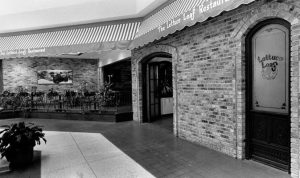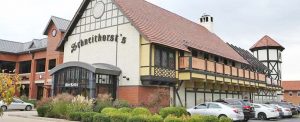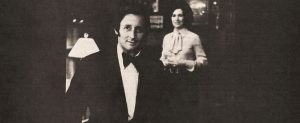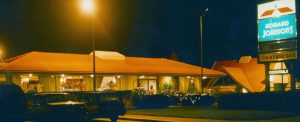Lost Tables: Remembering Casa Gallardo
Published July 11, 2021
Have you ever wondered what happened to that restaurant you once loved and have memories of dining at with your family and friends? We did! There is an amazing website called Lost Tables, dedicated to celebrating the restaurants of our past. We are partnering with the site’s creator Harley Hammerman and celebrating these wonderful stories. Hammerman and his wife Marlene are members of Shaare Emeth, and she is past president of the National Council of Jewish Women of St. Louis. Visit Lost Tables on Facebook
Remembering Casa Gallardo
Records show Mexican food was available in St. Louis as early as 1900, with stores selling canned tamales and chili con carne. O. T. Hodge developed the recipe which bears his name and began selling chili at the St. Louis Worlds Fair in 1904. But the biggest Mexican food success story in St. Louis is Ramon Gallardo’s.
Ramon Gallardo was born and raised in Mexico City. His mother was a nurse and his father was an attorney. Before Gallardo came to the United States, he worked for an attorney for a year and a half, but his dream of becoming an attorney never materialized.
ADVERTISEMENT
So while still a teenager, Gallardo went to California to spend the summer with a friend and ended up working at the Biltmore Hotel in Santa Barbara as a dishwasher. He worked there for two months and returned to Mexico City.
During this period, Gallardo purposely avoided other Spanish-speaking people so he could master English in the shortest time possible. It was not an easy time.
He eventually found work at the Harding’s Cafeteria on Wabash Avenue, again washing dishes.
In 1960, Gallardo moved to St. Louis. For 10 months, he worked in the cafeteria of the Milner Hotel at Washington and 18th Street. But he saw no future there, so he applied for a job with the Hulling’s organization. This was the start of a 13-year working relationship with the Apted family; Stephen J. Apted was Florence Hulling’s entrepreneurial son, who had greatly expanded upon his mother’s cafeterias.
ADVERTISEMENT
Gallardo’s first job was as a butcher at Apted’s Cheshire Inn. One day, the cook’s helper failed to show up for work. Gallardo asked the chef to let him help. Within a year, he was the chef’s assistant. From there, it was supervision of the kitchen, his first management job, and eventually the assistant to the general manager.
Gallardo continued to move upward in the Hulling’s organization, eventually becoming general manager of Miss Hulling’s Open Hearth in the Bel Air Hilton. Then, in 1969, Apted put Gallardo in charge of La Sala, his struggling downtown Mexican restaurant at 513 Olive.
Gallardo ran La Sala for a few more years and then, emboldened by his success, decided to open his own place. He got a Small Business Administration loan from the Plaza Bank. A bank officer named Gary O’Neal, who just happened to be crazy about Mexican food, worked out the details.
Gallardo paid off his $160,000 loan in 18 months.
In April of 1975, Ramon Gallardo opened Casa Gallardo, his new Mexican restaurant, on the ground floor of Westport Plaza’s tallest building. There was an authentic Mexican flavor to the décor; Gallardo had made long automobile trips to and from Mexico to buy fixtures for his restaurant – wrought iron ornaments, clay lamps, ornate light fixtures, paintings, serapes, upholstery and assorted knickknacks.
Before opening for business, Gallardo did extensive research in Mexico City, California and Texas. He obtained family recipes from an aunt in Mexico City. It’s not clear if the restaurant’s ubiquitous red salsa was one of those recipes, but the dipping sauce became so popular it was sold in grocery stores throughout the area. On the table with a basket of fresh tortilla chips at the start of every meal, the salsa was heavy on the tomato and had sufficient pepper to give it a nice tang.
Casa Gallardo’s menu was filled with standard Mexican fare, although perhaps not so standard in 1975. Appetizers included guacamole, quesadillas, nachos and tostadas; main dishes included enchiladas, tacos, burritos, chiles rellenos, chimichangas, tamales and fajitas; desserts included flan, fried ice cream, fried bananas and sopapillas. The margaritas were pre-mixed and poured from a bottle, instead of being handmade to order, but were still quite good.



















